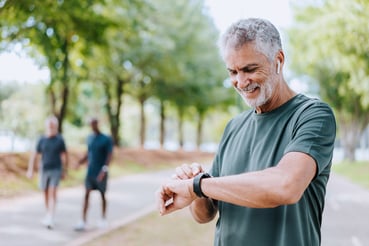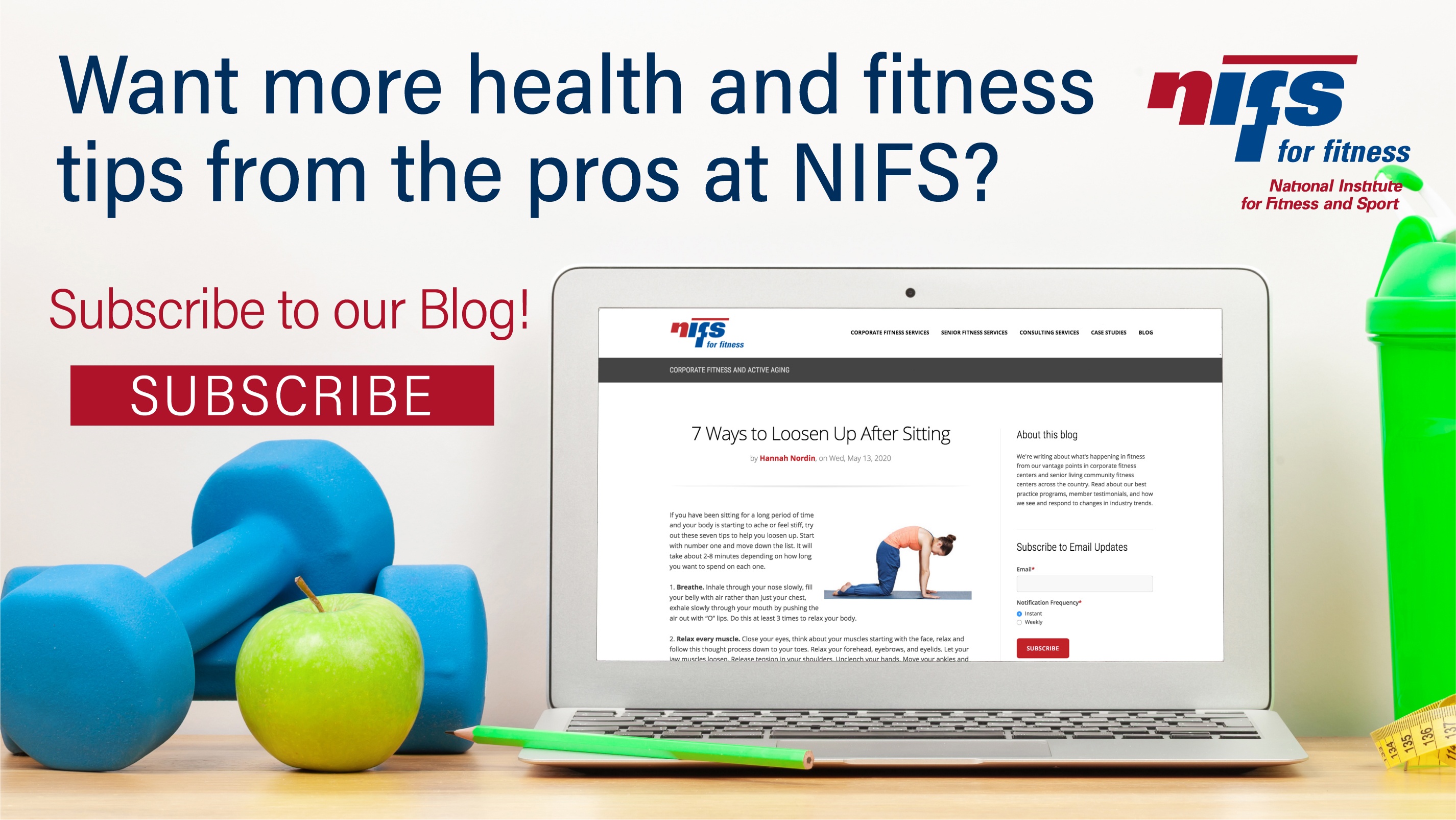 When deciding what workout gear to buy, take a moment to consider key factors like weather conditions, material types, fit, comfort, and function. These features are worth reviewing before you hit “add to cart.”
When deciding what workout gear to buy, take a moment to consider key factors like weather conditions, material types, fit, comfort, and function. These features are worth reviewing before you hit “add to cart.”
In warmer weather, go for gear that’s lightweight and breathable. In colder environments, moisture-wicking base layers and insulated pieces work best. Layering is especially helpful during transitional seasons when mornings and evenings are chilly, but the sun warms up the day. Let’s take a closer look at some common performance materials.
Popular Performance Fabrics
Polyester
Polyester is one of the most widely used fabrics in sportswear and athleisure, and for good reason. It’s inexpensive to produce, durable, moisture-wicking, quick-drying, recyclable, and often blended with other fabrics for added functionality. Polyester is frequently combined with spandex for stretch or with cotton for a breathable, lightweight feel. You’ll commonly see it in sports bras, leggings, and compression garments.
Nylon
Nylon, a synthetic polymer developed in the 1930s as a silk substitute, is strong and durable—perfect for activewear that takes a beating. It provides solid support, making it a great reinforcement material in blended fabrics. You’ll often find nylon in sports bras, cycling shorts, and compression gear. In cooler weather, it offers moderate moisture-wicking and low breathability, helping you retain warmth without trapping too much moisture. In warmer temps, nylon is sometimes treated with a durable water-repellent (DWR) coating to boost its moisture-wicking capabilities.
Spandex
Spandex, developed shortly after nylon, is known for its impressive stretch and recovery. It can stretch up to five times its original length and snap back to its original shape. When blended with polyester or cotton, spandex is ideal for workout clothing that supports a full range of motion—think leggings, yoga pants, compression shorts, and swimwear. However, because it’s manufactured with toxic chemicals, it might raise environmental or health concerns for some people.
Man-Made Cellulosic Fibers (MMCFs)
MMCFs are a newer category of fabrics made from wood pulp, often sourced from eucalyptus, beech, bamboo, and similar materials. While the process has been around for over a century, it’s gained popularity in recent years as a sustainable alternative to synthetic fabrics. MMCFs are strong, durable, moisture-wicking, quick-drying, biodegradable, and recyclable. Plus, they require less energy to produce, making them a smart choice for eco-conscious shoppers.
Other Key Features to Consider
Moisture-Wicking
This fabric feature pulls sweat away from your skin and pushes it to the fabric’s outer surface, where it evaporates quickly. This “capillary action” helps keep you dry during tough workouts.
Quick-Drying
Refers to how fast a fabric dries once it becomes wet—typically a strength of synthetic materials.
Sun Protection
Some athletic clothing is designed to block harmful UV rays. Look for items labeled UPF 30 or higher, especially for long runs under the sun.
Thumbholes
A small feature with a big impact—thumbholes in long sleeves help keep your hands warm during cool-weather workouts. Some styles even include built-in mittens.
Inner Liner
Some running shorts and pants come with built-in liners that are moisture-wicking and quick-drying to reduce chafing.
Compression
Tightly fitted clothing that helps increase blood circulation, improve oxygen flow, and reduce muscle fatigue. Compression gear is often linked to enhanced performance and recovery.
Insulation
Provides warmth without adding bulk. The level of insulation and type of fill can vary, so choose what suits your climate and activity level best.
Chafe-Free Seams
Flat, welded seams placed away from high-friction areas help reduce skin irritation during movement.
Mesh Vents
Look for mesh panels in heat-prone zones like your back, underarms, or sides. These areas help release heat and keep you cooler.
Reflectivity
Perfect for early morning or evening workouts—reflective accents enhance your visibility to drivers in low-light conditions.
There are countless options and features available, so be sure to consider how your workout gear will function for your specific needs. Don’t just go for the most stylish set—think about material, performance, and your training environment. The right clothing can make a big difference in your comfort and performance.
Happy running!!


 Exercise can affect our digestive system in many ways, mostly yielding beneficial results but occasionally leading to digestive discomfort if done incorrectly. Factors like meal timing, meal composition (amount of fat, protein, and carbs), exercise intensity, and duration all play a role. For instance, a high-fat meal before intense exercise may lead to digestive discomfort, but if the meal is given enough time to digest, it can actually improve exercise performance. So, how can exercise specifically aid digestion?
Exercise can affect our digestive system in many ways, mostly yielding beneficial results but occasionally leading to digestive discomfort if done incorrectly. Factors like meal timing, meal composition (amount of fat, protein, and carbs), exercise intensity, and duration all play a role. For instance, a high-fat meal before intense exercise may lead to digestive discomfort, but if the meal is given enough time to digest, it can actually improve exercise performance. So, how can exercise specifically aid digestion?
 When it comes to athletic performance and recovery, one advancement in recent years has been compression clothing. From professional athletes to fitness enthusiasts, compression garments have become a staple in many wardrobes. But what exactly is the science behind compression clothing, and how does it impact our bodies during exercise and recovery? Let's dive in and explore the world of compression wear.
When it comes to athletic performance and recovery, one advancement in recent years has been compression clothing. From professional athletes to fitness enthusiasts, compression garments have become a staple in many wardrobes. But what exactly is the science behind compression clothing, and how does it impact our bodies during exercise and recovery? Let's dive in and explore the world of compression wear.
 Improving your running time and efficiency can seem overwhelming. Whether you are a beginner or well-seasoned runner there is always room for performance improvement.
Improving your running time and efficiency can seem overwhelming. Whether you are a beginner or well-seasoned runner there is always room for performance improvement. Now that there is a general framework for how many calories people can burn cooped up at home, but how about what happens when people go out and get the family involved? Dedicated winter activities are a great way to get the family together and share some beautiful memories. An added benefit is being able to move around, have fun, and build a slight sweat.
Now that there is a general framework for how many calories people can burn cooped up at home, but how about what happens when people go out and get the family involved? Dedicated winter activities are a great way to get the family together and share some beautiful memories. An added benefit is being able to move around, have fun, and build a slight sweat. When going through one’s fitness journey, there are often times when working out becomes repetitive and boring. When that feeling of monotony starts to take place it’s generally a good idea to find a way to spice up your training. You can do so by varying your intensities during training, which in many cases is a great idea. But another way to add some variety to your training is by simply substituting movements in on a cyclical basis. Let’s discuss why this is helpful and then talk about some ways to change up your routine.
When going through one’s fitness journey, there are often times when working out becomes repetitive and boring. When that feeling of monotony starts to take place it’s generally a good idea to find a way to spice up your training. You can do so by varying your intensities during training, which in many cases is a great idea. But another way to add some variety to your training is by simply substituting movements in on a cyclical basis. Let’s discuss why this is helpful and then talk about some ways to change up your routine. Sometimes it’s hard to juggle all the daily responsibilities in life. Balancing work responsibilities can be difficult enough but trying to also maintain a social life at the same time can feel impossible. Being able to manage your time can be invaluable in many ways. There many benefits of having time management skills and having the right strategies can improve your skills.
Sometimes it’s hard to juggle all the daily responsibilities in life. Balancing work responsibilities can be difficult enough but trying to also maintain a social life at the same time can feel impossible. Being able to manage your time can be invaluable in many ways. There many benefits of having time management skills and having the right strategies can improve your skills.  The impact of physical activity on mood has been researched over the last few decades. There has been speculation that an increase in physical activity can provide a substantial positive impact on one’s mood, but to what extent? Let’s dive into the known relationship between physical activity and mood, how much of an effect physical activity can have, and finally will provide a few brief explanations over the mechanisms of which physical activity increases mood!
The impact of physical activity on mood has been researched over the last few decades. There has been speculation that an increase in physical activity can provide a substantial positive impact on one’s mood, but to what extent? Let’s dive into the known relationship between physical activity and mood, how much of an effect physical activity can have, and finally will provide a few brief explanations over the mechanisms of which physical activity increases mood!